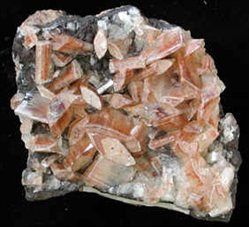Murdoch (1754–1839) was an associate of James Watt and Mathew Boulton at the Soho works in Birmingham, and was a brilliant engineer and inventor.
 He was the pioneer of gas lighting and also invented a steam driven carriage but, was discouraged from developing this further by Watt and Boulton so this invention, that pre-dated Trevithick’s locomotive by 20 years, went generally unnoticed.
He was the pioneer of gas lighting and also invented a steam driven carriage but, was discouraged from developing this further by Watt and Boulton so this invention, that pre-dated Trevithick’s locomotive by 20 years, went generally unnoticed.
From 1779, Murdoch was involved with the installation of Watt and Boulton’s steam engines in the mines of Cornwall, and during the years he spent there collected many Cornish minerals.
The mineral collection (1200 specimens), his desk/cabinet, and an inventory of his collection dated 1826, were purchased by the Museum in 1945.